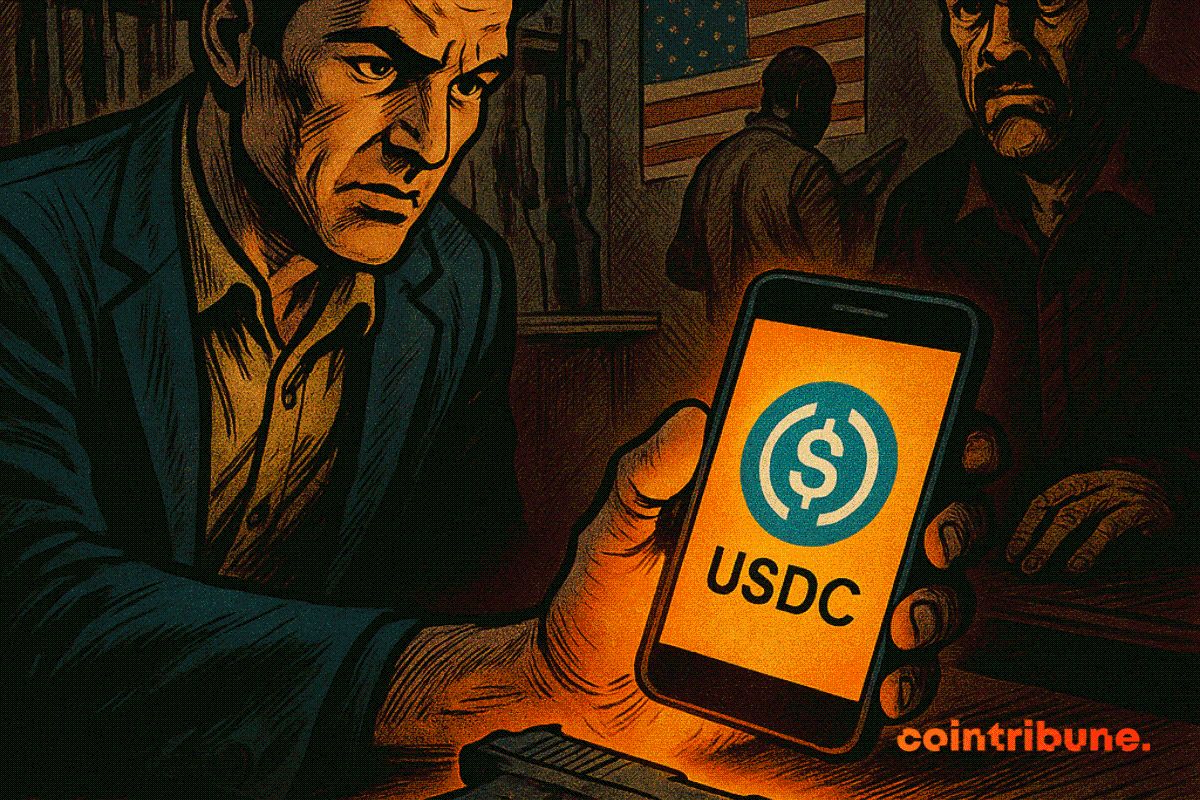Quantum Computing and the Critical Need for Quantum-Resistant Infrastructure: A Strategic Priority for Investment
- Quantum computing threatens global encryption systems, with "harvest now, decrypt later" risks accelerating as cybercriminals stockpile data for future decryption. - Experts warn telecom networks face urgent vulnerabilities, requiring immediate adoption of quantum-safe measures to prevent decade-long decryption risks. - Pioneers like Michelle Simmons advance atomic-scale quantum solutions, while PQC markets surge from $1.15B to $7.82B by 2030, driven by NIST standards and critical infrastructure demands.

We are at a pivotal moment in the digital era. With quantum computing moving from concept to reality, the dangers it presents to current encryption methods are becoming increasingly real. Specialists caution that the "harvest now, decrypt later" scenario—where attackers collect encrypted data now to break it with future quantum computers—is already unfolding. For investors, this brings both the challenge of protecting vital global systems and the opportunity to benefit from the booming market for quantum-resistant technologies.
Quantum Computing: The Accelerating Threat
The Global Risk Institute’s 2024 Quantum Threat Timeline Report, based on insights from 32 international authorities, delivers a stark warning. Malicious actors are amassing encrypted information, betting that quantum advancements will soon undermine today’s cryptography. Telecom networks, which rely on a mix of old and new technologies (from 2G to 5G) and handle sensitive data, are especially at risk. The report predicts that without swift adoption of quantum-resistant protections, confidential data—like user records, payment details, and network setups—could be exposed within ten years.
This urgency is heightened by market trends. The quantum computing industry is forecasted to jump from $1.3 billion in 2024 to $5.3 billion by 2029, while the post-quantum cryptography (PQC) sector is expected to soar from $1.15 billion to $7.82 billion by 2030. However, implementation is lagging: only 42% of the top 100 global websites have PQC support, and a mere 2% of TLS 1.3 connections use quantum-resistant encryption. This disconnect between the looming threat and current preparedness sets the stage for high-stakes investment.
Trailblazers in Quantum: Michelle Simmons and Atomic Innovation
Leading this technological shift is Professor Michelle Simmons, a renowned quantum physicist who has pushed the limits of atomic-scale electronics. As the CEO of Silicon Quantum Computing and a Scientia Professor at the University of New South Wales, Simmons has led the development of the first-ever single-atom transistor and ultra-thin silicon wires. These innovations are not just theoretical—they are essential for creating reliable quantum computers and secure quantum infrastructure.
Simmons and her team have set records, including the fastest silicon spin two-qubit gate, a key step for scalable quantum computing. Her pioneering work in atomic-precision devices has made Australia a leader in quantum science. For investors, her achievements highlight the value of supporting companies that turn quantum theory into practical, real-world solutions.
Key Investment Areas in Quantum-Resistant Infrastructure
Switching to quantum-secure algorithms is now a necessity for both operations and economics. The National Institute of Standards and Technology (NIST) has already approved three post-quantum cryptographic standards (CRYSTALS-KYBER, CRYSTALS-Dilithium, and SPHINCS+), with a fourth (HQC) joining in 2025. These standards form the backbone of quantum-safe systems, driving demand for businesses focused on PQC integration, quantum-proof hardware, and adaptable cryptographic platforms.
Investors should focus on industries most exposed to quantum risks:
1. Telecommunications: Providers need to update older systems while ensuring compatibility. Firms offering hybrid encryption solutions, such as quantum-ready TLS enhancements, are in a strong position.
2. Cybersecurity: Companies creating encryption tools based on PQC and NIST standards will experience rising demand.
3. Quantum Hardware: Both startups and established companies in atomic-scale manufacturing (like Simmons’ Silicon Quantum Computing) are developing the technology needed to leverage and defend against quantum threats.
Weighing the Costs: Retrofitting or Moving Ahead Now
The financial implications are enormous. Updating systems vulnerable to quantum attacks after a powerful quantum computer appears could cost trillions, with telecom companies facing the steepest expenses. Upgrading thousands of network points, cloud services, and supplier networks would demand massive resources and coordination. Taking proactive steps now is significantly more affordable.
Regulatory changes also play a role. Governments around the globe are requiring critical infrastructure to adopt quantum-safe measures, creating a market driven by compliance. Initiatives like the European Union’s Quantum Technologies Flagship and the U.S. National Quantum Initiative are already investing billions to speed up this transition.
Final Thoughts: Quantum Technology’s Investment Potential
The quantum threat is no longer a distant concern—it demands immediate attention. Investors should look to support businesses that not only address these risks but also unlock the transformative power of quantum advancements. Innovators such as Michelle Simmons demonstrate the kind of leadership needed for this new era. By investing in quantum-secure infrastructure, investors can safeguard their portfolios and seize the opportunities presented by one of this century’s most significant technological revolutions.
Immediate action is essential. As the world moves closer to the quantum age, those who help build the future will be the ones to thrive.
Disclaimer: The content of this article solely reflects the author's opinion and does not represent the platform in any capacity. This article is not intended to serve as a reference for making investment decisions.
You may also like
Bitcoin: Trump Seeks to Reassert U.S. Control Amid China’s Crypto Offensive

Polkadot (DOT) Flashes Potential Bullish Reversal Setup – Will It Rally Higher?

Is Arbitrum (ARB) Poised for a Breakout? Key Pattern Formation Suggests So!

Traditional Hedge Funds Deepen Crypto Exposure Despite Market Swings
